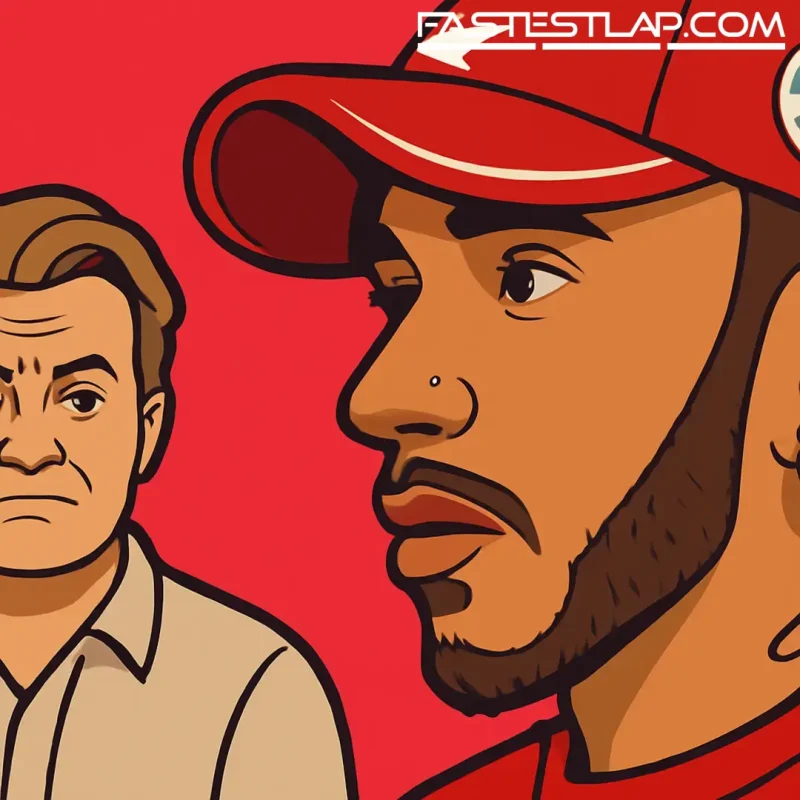Nico Rosberg: Fewer sponsor days helped pull Hamilton to Ferrari
Nico Rosberg has lifted the lid on a very modern F1 calculation: Lewis Hamilton didn’t just leave Mercedes for Ferrari chasing a title in red — he also wanted fewer days in a suit.
Speaking on Sky Sports F1’s podcast, the 2016 world champion and Hamilton’s former teammate said the grind of sponsor and media commitments was a real factor behind Hamilton’s switch for 2025.
“It’s painful,” Rosberg admitted of the PR load that top drivers shoulder. “You earn a lot and people say, ‘just go shake some hands,’ but it is really painful.” He suggested Mercedes’ schedule can climb towards 60 sponsor days per year, and claimed Ferrari’s demands are far lighter. Citing Sebastian Vettel’s time at Maranello, Rosberg said he heard it was “around 10 days,” adding that, late in a career, that difference “is something you value enormously.”
“That was one of the reasons for Lewis’s switch,” he said. “It was part of the decision-making.”
Hamilton stunned the paddock when he exercised an exit clause in his Mercedes deal before the 2024 season even began, tearing up what was meant to be a two-year extension to join Ferrari for 2025. The seven-time champion moved on a multi-year agreement that was widely reported to be eye-watering in scale and stretching beyond his F1 duties into his Mission 44 work. But Hamilton was clear: this wasn’t a victory lap or a vanity play. “I’m here to win,” he said at the start of the year, with the eighth title — that elusive record-breaker — the obvious endgame.
The Ferrari move has always had layers. The romance of the red cars. The boyhood dream. The chance to reboot after a long run at Mercedes. And, as Rosberg hints, a life calculus: less time on the road for handshakes, more time in the simulator, in the gym, or simply breathing.
To be clear, Hamilton hasn’t exactly been off the grid. His first months in red were busy — from the heritage-soaked photos outside Enzo Ferrari’s house in Maranello to TPC running and fan-facing events — the kind of imagery Ferrari deploys better than anyone. But the claim here isn’t that Hamilton avoided publicity; it’s that Ferrari’s brand heft lets it sell partnerships without leaning so hard on the drivers, and that difference matters when you’ve been doing it at maximum volume for more than a decade.
It’s an angle that lands as Mercedes wrestles with its own future. Rosberg even floated sponsor commitments as a potential sticking point in George Russell’s negotiations, a reminder that in 2025, PR days are a bargaining chip like any other. Teams sell access. Drivers sell time. The equilibrium is often negotiated in hours, not clauses.
Inside Ferrari, the mood music is what you’d expect — and probably what Hamilton wanted. Team principal Fred Vasseur has been vocal about the energy the Brit has drawn from the Tifosi. After a pre-Italian Grand Prix event in Milan, Vasseur said the reception gave Hamilton a tangible boost through the weekend. They didn’t deliver the result they wanted at Monza, but the boss made a point of the atmosphere: the fans stayed, they roared, and that momentum flows inward.
This is the gamble Hamilton took: trade one empire for another, swap the corporate treadmill for a different kind of intensity, bet on Ferrari’s upward curve and the power of a fanbase that can carry you through bad Saturdays and turn decent Sundays into something more. In 2025, he lines up alongside Charles Leclerc at a team that has the pieces and the expectation. The margin between title tilt and also-ran is slim. So, too, is the margin between a manageable year and a draining one.
Rosberg’s comments won’t shock anyone who’s lived the circus, but they do add texture. The decision to move wasn’t just about lap time and wind tunnel numbers. It was about the hours around those laps — the quiet calculus of energy management that defines a late-career great.
Whether the lighter PR load proves decisive is another matter. Hamilton didn’t go to Ferrari for an easier life; he went there for a clearer one. If the red cars give him a car capable of turning that clarity into an eighth crown, the rest will read like smart prioritization. If not, it’ll be remembered as a bet on feel — and in Ferrari’s world, feeling has always been part of the formula.




